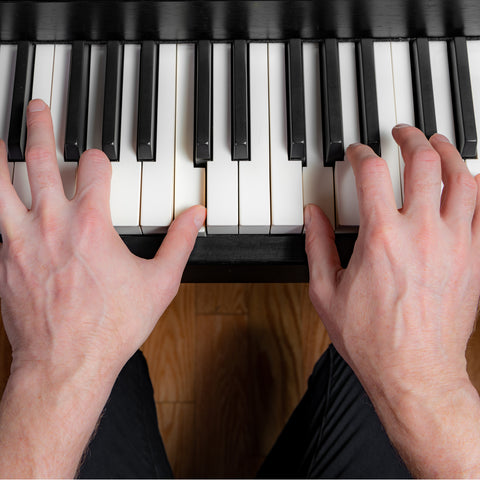Kids Learn Chords

Kids learn chords because chords will give them control of the entire instrument. Reading music will only give you control of a single note. Learning about chords at the piano is a fun way for a child to have emotional control of the piano.
Name another object that they can use to produce sounds that have an emotional quality, such as happy or sad, weird or dangerous.
Piano Is Easy
Emotional Qualities Of Chords
Whether or not a chord is happy or sad is a tangible quality to a child. To ask a child to listen to music and make a judgment is to connect their mind to a deeper, subjective level of thought than merely pushing piano keys.
To participate in the piano as a listener is to be within its sphere of influence, and under its benevolent spell. This is called “ear training” and comprises a good portion of a first year music conservatory student.
It is easy to simplify this process so that even very young children can have the intellectual benefits of musical thought. The simplification of ear-training has been done throughout musical history by master teachers. The most famous of these are composer-teachers such as Hindemith, Kodaly and Carl Orff.
Happy, Sad, Weird, Dangerous
I teach children to recognize four kinds of sounds, or chords: happy, sad, weird and dangerous. These are emotional states that kids recognize, and correspond to the chord types major, minor, augmented and diminished. I try to get the child to recognize the sounds as if they came from a drama or cartoon on television.
That’s an easy memory for a child to draw upon. There are infinite games you can make up using these sounds. I’ve seen kids make up their own songs and mini-operas to make use of the new toy-like tools that chords become.
Play Different Types of Chords
Here are examples of the four types of chords. Play the three keys at the same time on a real piano keyboard to see how they sound.
Chords Are Visual
Chords are easy to comprehend visually, without any reference to printed sheet music. This is an advantage to kids that are slowly gaining confidence at reading music. Think of the Rosetta Stone, a fabled device that allows one to see the secret of any language.
Chords are the Rosetta Stone of music. Think of the alphabet. Without it, words are incomprehensible. Chords are the emotional alphabet of music, and are the mathematical foundation for all musical thought. Simplified, chords become like Legos to children. They are easy to understand and manipulate.
BOOKS FOR YOUNGER KIDS
REFERENCES
Chords
Basic Piano Chords For Kids
Root Position Chords
First Inversion Chords
Second Inversion Chords
Two Note Chords For Kids
Six Basic Chords For Kids
Two Note Chords for Younger Kids
What Is A Root Position Chord?
Chords for Kids




